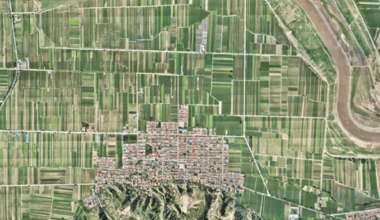Welcome to the era of innovation, where technology continually surprises us with its transformative power. Among the many groundbreaking advancements, one technology stands out for its versatility and impact across various industries: magnetometers. These devices, designed to measure the strength and direction of magnetic fields, have emerged as unsung heroes in fields ranging from archaeology to aerospace. Today, we delve into the realm of magnetometers, exploring their innovative applications and how they are revolutionizing industries worldwide.
But before we dive in, let’s take a moment to understand what magnetometers are and how they work. Simply put, a magnetometer is a specialized instrument used to detect and measure magnetic fields. These fields, invisible to the naked eye, play a crucial role in numerous natural and artificial phenomena, from Earth’s magnetic field to the magnetic signatures of buried artifacts.
To grasp the full scope of magnetometer applications, let’s explore two cutting-edge products from Sensys Magnetometer Solutions: the MagDrone R4 and MagDrone R3 magnetometers for drones. These state-of-the-art devices are pushing the boundaries of what’s possible, offering unprecedented capabilities in aerial magnetic surveying. Let’s take a closer look at how these technologies are reshaping industries such as archaeology, geology, and beyond.

Principles of Magnetoresistive Magnetometers
Magnetoresistive magnetometers operate based on the magnetoresistive effect, a phenomenon where the electrical resistance of specific materials changes when exposed to an external magnetic field. Two primary types of magnetoresistive materials are commonly used:
- Anisotropic Magnetoresistance (AMR): Discovered in the early 20th century, AMR occurs in ferromagnetic materials like permalloy. It results in a change in resistance based on the angle between the applied magnetic field and the direction of electrical current flow. Although relatively weak (typically around 2% resistance change), AMR still enables the development of sensitive and low-noise magnetometers.
- Giant Magnetoresistance (GMR): GMR, discovered in the late 20th century, is significantly stronger than AMR. It occurs in multilayered structures composed of alternating ferromagnetic and non-magnetic materials. GMR sensors can exhibit resistance changes of up to 50% or more in response to an external magnetic field, providing exceptional sensitivity.
Types of Magnetometer
Magnetometers fall into two main categories based on their mechanism of operation:
- Scalar Magnetometers: Examples: Proton Precession and Overhauser Effect magnetometers. These measure the magnitude of the magnetic field but provide limited information compared to vector magnetometers. Widely used in applications like metal detection and mineral exploration.
- Vector Magnetometers: Examples: Fluxgate, Optically Pumped, and SQUID (Superconducting Quantum Interference Device) magnetometers. These measure both the magnitude and direction of the magnetic field. Commonly employed in geophysical surveys, navigation systems (including smartphones), and scientific research.

The Silent Guardians: Essential Applications of Magnetometers in Today’s World
Let’s dive deeper into the fascinating applications of magnetometers across various fields. These unassuming devices play a crucial role in shaping our world, even though they often remain unseen and unrecognized. Here are some key applications:
Geological Surveys:
Magnetometers are essential tools for geologists and archaeologists. They help identify variations in the Earth’s magnetic field, providing valuable data for surveys.
In geological surveys, magnetometers, like the Geometrics MagArrow MK2 with self-contained GPS, storage and wifi on board, detect mineral deposits, map subsurface structures, and reveal hidden geological features, like locating buried artifacts or ancient structures.
Navigation:
Magnetometers act as sophisticated compasses. They determine the orientation of objects relative to the Earth’s magnetic field.
In everyday life, you encounter magnetometers in your smartphone. They assist GPS systems by providing information about the device’s orientation. Aircraft and ships also use magnetometers for navigation.

Military Applications:
The military relies on magnetometers for various purposes:
- Submarine Detection: Magnetometers help detect submarines by identifying disturbances in the Earth’s magnetic field caused by submerged vessels.
- Magnetic Mines: These devices play a critical role in locating magnetic mines, ensuring safe navigation in naval operations.
- Hardware Detection: Military hardware that disrupts the Earth’s magnetic field can be detected using magnetometers.
A device like Sensys MagDrone R3 Magnetometer has a built-in GPS and the option to connect an external one; the latter is recommended for better geotagging of data, especially when used with the SkyHub onboard computer and an RTK-equipped drone. This will come in handy when locating buried infrastructure, such as metal pipes, shielded cables, and power cables.
Space Exploration
Space probes and satellites carry magnetometers to study celestial bodies:
- Planetary Magnetic Fields: Magnetometers measure the magnetic fields of planets and moons. By studying these fields, scientists gain insights into the composition and internal structure of these celestial bodies.
- Solar Wind Interaction: Understanding the magnetosphere of planets helps us comprehend space weather phenomena, such as interactions with solar wind.

Magnetometers: Navigating Earth and Beyond
In the ever-evolving landscape of technology, magnetometers have emerged as indispensable tools with far-reaching applications across diverse industries. From the depths of the Earth to the vastness of space, these devices have revolutionized how we explore, understand, and interact with our surroundings.
The principles of magnetoresistive magnetometers, from Anisotropic Magnetoresistance (AMR) to Giant Magnetoresistance (GMR), provide the foundation for sensitive and precise measurements of magnetic fields. Coupled with advancements in drone technology, magnetometers like the MagDrone R4 and MagDrone R3 from Sensys Magnetometer Solutions have opened new avenues for aerial magnetic surveying, transforming fields such as archaeology, geology, and environmental monitoring.
Through scalar and vector magnetometers, we can map the Earth’s magnetic field with unparalleled accuracy, uncovering hidden treasures, identifying mineral deposits, and navigating with precision. From aiding geological surveys to enhancing military capabilities and advancing space exploration, magnetometers have become indispensable instruments in our quest for knowledge and innovation.
At Dynatech Innovations, we look forward to the future as we expand our product line of magnetometers. With ongoing advancements in sensor technology and data analytics, the potential for magnetometer applications continues to grow. These innovations promise even greater insights into the mysteries of our planet and the cosmos. The magnetic revolution is far from over, and each new discovery brings us closer to unlocking the full potential of this remarkable technology.



